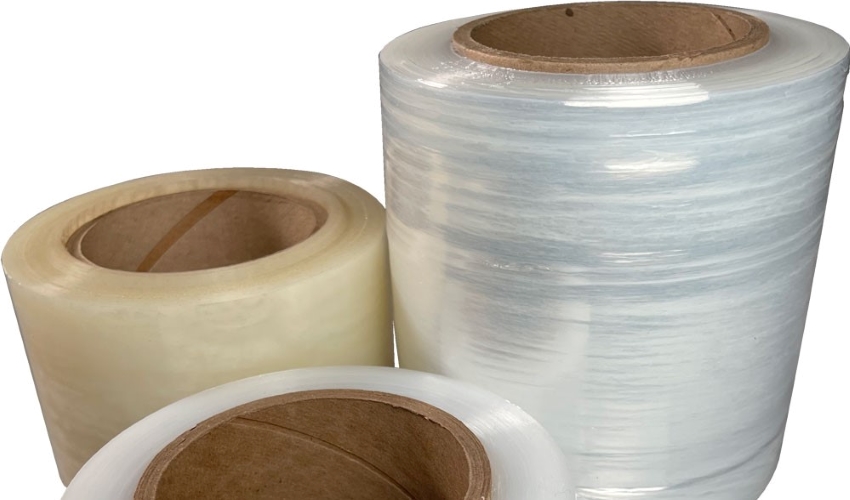
Stretch wrap is an essential packaging material used to secure products on pallets, ensuring safe transport and storage. Its elasticity keeps items tightly bound, preventing them from shifting, tipping, or breaking. A key factor in choosing the right stretch film is understanding the stretch wrap gauge, which measures the film’s thickness. The gauge directly influences the strength, durability, and stretch capacity of the wrap, making it crucial to select the appropriate thickness based on the load and application. A higher gauge provides more puncture resistance, while a lower gauge offers cost-efficiency for lighter loads. Consulting a stretch wrap gauge chart helps identify the best film for specific needs, while knowing the stretch wrap gauge meaning ensures optimal performance and reduced waste. Stretch wrap gauge measures thickness, with 80 gauge as the industry standard for securing loads up to 2,400 pounds with strong elasticity.
Why Choose Our Stretch Film Over Competitors?
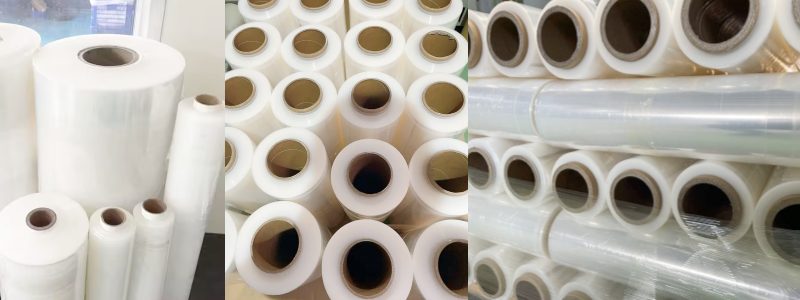
| Attribute | Description |
|---|---|
| Product Name | Stretch Wrap |
| Brand Name | PWP Stretch Film |
| Place of Origin | Fujian, China |
| Material Options | PE, LLDPE, LDPE |
| Type | Stretch Film |
| Length Options | Custom Length, 50m - 1500m, etc. |
| Width Options | Custom Widths |
| Thickness Options | 8mic - 50mic |
| Transparency | Transparent |
| Hardness | Soft |
| Feature | Moisture Proof, Durable, Tear Proof, Strong Tensile Strength |
| Surface Finish | Smooth, Glossy, High Gloss, Plain, Custom Finish |
| Tensile Strength | 0.0 - 50.0 MPa |
| Application | Industrial Use |
| Use | Hand Roll, Machine Roll |
| Processing Type | Casting, Blow Molding, Multiple Extrusion (5 layers) |
| Packaging Type | Carton or Pallet |
| Core Size | 1 inch - 3 inch Paper Core |
| Certifications | ISO 9001, MSDS, ROHS6 |
| Delivery Time | 15-20 Days (Depends on Order Size) |
| MOQ (Minimum Order Quantity) | 6 Rolls (for some variations), 1000kg (bulk orders) |
| Lead Time | 15-20 Days |
| Payment Terms | L/C or T/T |
Understanding the stretch film gauge chart is essential when selecting the right stretch film for packaging needs. The chart provides a comprehensive overview of the different thicknesses available, measured in gauge, and helps match the correct film to the type of load being wrapped. Choosing the appropriate gauge ensures the film’s strength, stretchability, and puncture resistance are adequate for its intended purpose, minimizing waste and securing loads effectively during transport or storage.
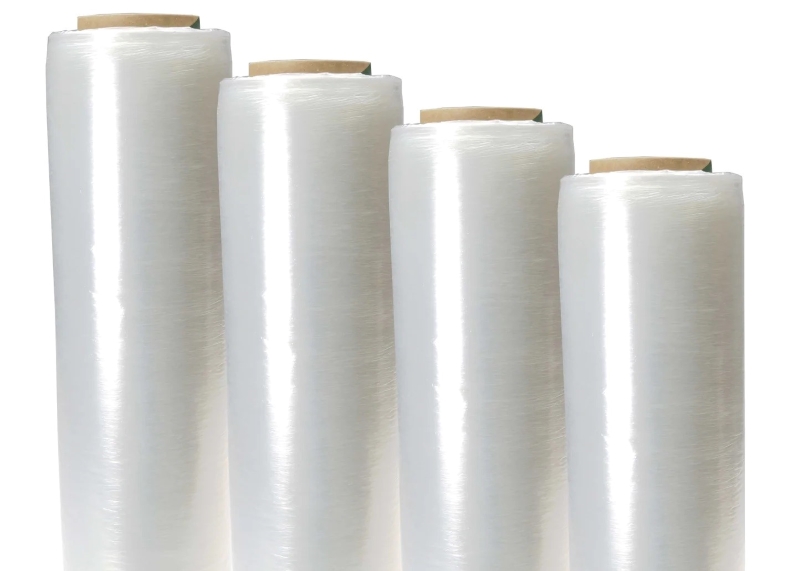
The stretch wrap gauge chart displays the most common gauges—37, 60, 80, 100, and 120—along with their respective thicknesses and uses. Each gauge level provides unique features that make it suitable for specific applications:
37 Gauge:
60 Gauge:
80 Gauge:
100 Gauge:
120 Gauge:
Different stretch wrap film gauge options are available in various widths to suit both hand and machine applications. Hand stretch films typically come in widths ranging from 12 to 20 inches, while machine films are often 20 inches wide or more. These films are available as continuous rolls or pre-stretched options.
Continuous Rolls:
Pre-Stretched Wrap:
Pre-stretch film wrap is especially useful for operations looking to minimize fatigue and optimize productivity, while continuous rolls are more suitable for wrapping irregular or heavy objects. Both hand and machine films benefit from selecting the correct stretch wrap gauge based on the weight and shape of the load, ensuring secure transportation and storage without unnecessary waste or damage.
Choosing the right gauge stretch film for moving is essential to protect belongings during transit. The type of items being transported, their weight, and the distance of the move determine which gauge is most suitable. Selecting the right gauge minimizes material waste while ensuring that furniture, appliances, and fragile items remain secure. In this section, we’ll explore moving what gauge stretch wrap is ideal for different scenarios and why the correct choice improves efficiency and safety.
The question of moving what gauge stretch wrap to use depends largely on the type and weight of the items. The following guidelines highlight the best gauge options for typical moving scenarios:
| Type of Item | Recommended Gauge | Reason |
|---|---|---|
| Lightweight boxes and soft goods | 60 gauge | Flexibility and minimal material usage |
| Furniture, appliances, and electronics | 80 gauge | Offers puncture resistance and secure wrapping for bulky items |
| Heavy or irregularly shaped items | 100 gauge | Ensures durability for long-distance moves |
60 Gauge for Light Items:
80 Gauge for General Moving Use:
This gauge is ideal for both short-term and long-distance moves, securing goods effectively on pallets or during storage.
100 Gauge for Heavy-Duty Applications:
This gauge prevents tearing when wrapping heavy loads with sharp edges, ensuring goods remain intact during long-distance transit.
Using the correct stretch wrap gauge alongside appropriate tools improves wrapping efficiency during a move:
In industrial settings, loads such as metal beams, machinery, and pallets of heavy products require stretch wraps including outdoor stretch wrap with higher gauge values. These thicker wraps provide the necessary strength and durability to handle sharp surfaces and uneven loads without tearing. Referring to a stretch wrap gauge chart ensures businesses select the appropriate thickness for each task.
60-80 Gauge:
100-120 Gauge:
150 Gauge and Above:
When deciding on the appropriate industrial stretch wrap gauge, businesses must consider several factors, including load weight, product shape, and transit conditions. Here are some common use cases:
Wrapping Metal and Construction Materials:
Securing Industrial Machinery and Equipment:
Palletizing Heavy Drums or Barrels:
At PWP Stretch Film, we understand that the specific needs of your business may require a tailored approach to packaging solutions. Our Custom Stretch Wrap Gauge is a perfect example of how we provide flexible, high-quality solutions that are designed to meet the unique requirements of each client.
A stretch wrap gauge refers to the thickness or measurement of the stretch film that determines its strength, durability, and stretchability. At PWP Stretch Film, our Custom Stretch Wrap Gauge allows you to select the exact gauge (thickness) of stretch film that best fits your application, ensuring optimal performance, protection, and cost efficiency. Whether you’re wrapping light, medium, or heavy-duty loads, we can customize the gauge to match your specific needs.
At PWP Stretch Film, we are committed to providing innovative and customized packaging solutions that not only meet but exceed your expectations. The Custom Stretch Wrap Gauge is just one example of how we continue to innovate to serve our clients’ diverse and evolving needs.
The ideal gauge depends on multiple factors that impact the performance of the wrap.
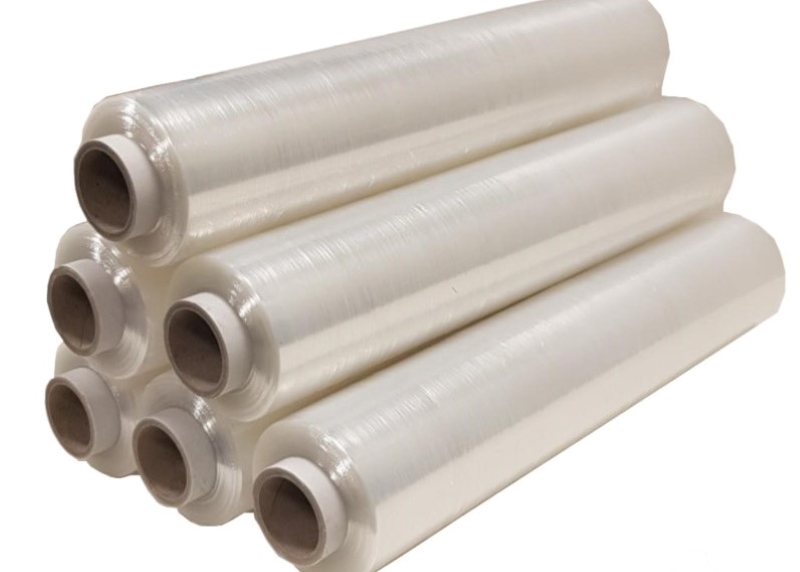
Here are the key considerations when deciding what stretch wrap gauge do I need:
Weight of the Load:
Shape and Size of the Items:
Duration of Storage or Transport:
Manual vs. Machine Wrapping:
The table below summarizes which stretch wrap gauge fits specific packaging needs:
| Load Type or Application | Recommended Gauge | Reason |
|---|---|---|
| Clothing, soft goods, or small boxes | 60 gauge | Lightweight and flexible for minimal material usage |
| Furniture and appliances | 80 gauge | Durable and versatile for general moving and storage |
| Sharp-edged industrial equipment | 100-120 gauge | Puncture-resistant for heavy, irregular loads |
When wondering “What gauge stretch wrap do I need?”, it is useful to consult a stretch wrap gauge chart to ensure the appropriate film is selected. The chart helps identify the best gauge for specific load capacities and packaging applications, optimizing both performance and cost. For example:
The gauge refers to the thickness of the stretch film, with higher gauges providing greater strength and puncture resistance. Each gauge level is designed for specific applications, balancing flexibility, holding force, and material efficiency. Here’s a breakdown of the different stretch wrap gauges commonly used:
37 Gauge:
60 Gauge:
80 Gauge:
100 Gauge:
120 Gauge:
Selecting the right gauge ensures effective packaging, whether for local moving, long-term storage, or industrial transport. Each gauge offers specific advantages depending on the type and weight of the load:
Here are some common scenarios where different stretch wrap gauges excel:
The thickest available stretch wrap films, such as moving furniture wrap, typically range from 120 to 150 gauge or higher. These high-gauge films offer superior tear resistance and are used when load security is critical. While most general applications rely on gauges between 60 and 100, the heaviest stretch wrap gauge made provides unmatched performance for extremely heavy or high-value items.
High-gauge stretch wrap is necessary for applications where standard gauges (such as 80 or 100 gauge) would be insufficient. These wraps secure products under harsh handling conditions, ensuring no shifting, tearing, or product damage. Below are common uses for the heaviest stretch wrap gauge made:
Understanding the question “What does gauge mean in stretch wrap?” is essential for selecting the right film thickness for various packaging needs. In packaging terminology, gauge refers to the measurement of film thickness, with higher gauge values indicating thicker films and lower gauge values representing thinner films. To simplify comparisons, micron to gauge stretch film conversions are often used, helping to bridge different measurement systems. Choosing the appropriate stretch wrap gauge is critical, as it impacts the film’s durability, stretchability, and ability to secure loads effectively.
The term gauge is a standard way to quantify the thickness of stretch film. One gauge equals approximately 0.254 microns or 0.01 mils (thousandths of an inch). Thinner films, such as 37 or 60 gauge, are more flexible and typically used for lighter loads, while thicker films, such as 80 or 120 gauge, offer greater puncture resistance and are suitable for heavier loads. A clear understanding of what gauge represents helps businesses select films that align with their load requirements without overspending on unnecessary material thickness.
Consulting a stretch wrap gauge chart is crucial for selecting the right film thickness. A gauge chart outlines the thickness, recommended applications, and load capacities of different gauges. For instance, 80-gauge wrap, a standard choice, is ideal for securing loads up to 2,400 lbs. If the film thickness is not matched to the load’s weight or nature, it can result in either product damage or unnecessary material waste.
Understanding “what does gauge mean in stretch wrap” enables businesses to make informed decisions when choosing packaging materials. If the wrong gauge is selected, companies risk compromising product security, leading to damaged goods or increased operational costs due to wasted material. Matching the stretch wrap gauge with the type of load ensures packaging efficiency and load stability.
Selecting the heaviest stretch wrap gauge made provides key benefits, especially in high-stakes packaging scenarios:
Gauge-to-micron and gauge-to-mil conversions help businesses align specifications, especially when sourcing materials internationally or comparing products from different manufacturers.
The table below provides a simple reference for converting between stretch wrap gauge, mils, and microns, helping you select the correct film thickness:
| Gauge | Microns (µm) | Mils (thousandths of an inch) | Use Case |
|---|---|---|---|
| 37 | 9.4 µm | 0.37 mils | Lightweight packaging, bundling |
| 60 | 15.2 µm | 0.60 mils | General-purpose moving |
| 80 | 20.3 µm | 0.80 mils | Household appliances, furniture |
| 100 | 25.4 µm | 1.00 mil | Industrial machinery wrapping |
| 120 | 30.5 µm | 1.20 mil | Heavy-duty packaging |
Using a stretch wrap gauge conversion table ensures that you can cross-reference various units effectively and avoid purchasing the wrong film thickness for your packaging needs.
Each gauge size corresponds to a specific thickness, with lower gauges offering more flexibility and higher gauges providing greater strength.
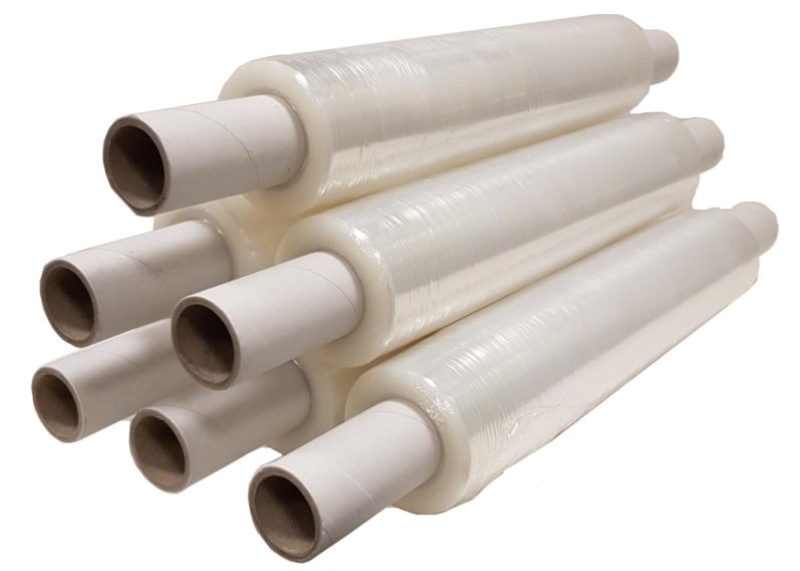
Below is a breakdown of the most popular stretch wrap gauge sizes and their use cases:
| Gauge Size | Thickness (Microns) | Application | Maximum Load Capacity |
|---|---|---|---|
| 37 Gauge | 9.4 µm | Light bundling, short-term storage | Up to 800 lbs |
| 60 Gauge | 15.2 µm | Small boxes, clothing, soft goods | Up to 1,800 lbs |
| 80 Gauge | 20.3 µm | Furniture, appliances, general-purpose moving | Up to 2,400 lbs |
| 100 Gauge | 25.4 µm | Machinery, industrial equipment | Up to 3,000 lbs |
| 120 Gauge | 30.5 µm | Metal products, construction materials | Over 3,000 lbs |
| 150 Gauge | 38.1 µm | Heavy-duty pallets, steel beams, large drums | Exceeds 3,500 lbs |
When selecting stretch wrap gauge sizes, it’s important to match the film’s thickness with the load type to achieve optimal results. Using a higher gauge than needed results in wasted material, while using a gauge that’s too low can compromise product safety. Below are practical tips for selecting the right gauge size:
Choosing the correct stretch wrap gauge sizes delivers several key advantages, including:
Choosing the correct size of stretch wrap involves assessing the weight, dimensions, and nature of the load. Here’s a step-by-step guide:
By considering these factors and referring to stretch wrap gauge charts, you can ensure the ideal selection for your packaging needs.
The gauge on a stretch wrap refers to the thickness of the film used to secure products during transport or storage. Gauge is a standard measurement in packaging, indicating how thick the film is. The higher the gauge, the thicker and more durable the wrap. For example, a 60-gauge wrap is thinner than an 80-gauge wrap, making it ideal for lighter loads, while the thicker 80-gauge film is used for securing heavier items. The gauge directly impacts the film’s strength, stretchability, and puncture resistance, ensuring that the correct wrap is selected based on the load’s weight and the required level of protection. Businesses often refer to a stretch wrap gauge chart to select the appropriate film thickness, ensuring effective packaging without unnecessary waste.
In stretch film, 80 gauge is thicker than 60 gauge. The increased thickness provides additional strength and durability, making 80-gauge film more suitable for securing medium to heavy loads, such as furniture and appliances. In comparison, 60-gauge wrap is thinner, making it ideal for lightweight items, such as clothing or smaller boxes, where flexibility and minimal material usage are important. The 80-gauge film offers better puncture resistance and can handle more stress during transit, making it the standard choice for most general-purpose applications. When selecting between the two, it’s important to consider the weight and nature of the load—for heavier or irregularly shaped items, the thicker 80-gauge film is the better option, ensuring that products remain secure and intact during transportation.
The term gauge in stretch film refers to the measurement of the film’s thickness, with higher gauge numbers indicating thicker films. In packaging, the gauge value helps businesses determine the right type of film based on the weight and fragility of the load. Thin gauges, such as 37-60 gauge, offer flexibility and cost-efficiency, while higher gauges (80-120 gauge) provide stronger, more durable wraps for heavier loads. Stretch wrap gauge directly affects puncture resistance, stretch capacity, and load security, making it essential to match the correct gauge with the type of product being wrapped. Consulting a stretch wrap gauge chart ensures that companies select the ideal thickness for their packaging needs, reducing the risk of overuse or underuse.
Stretch wrap thickness is typically measured in mils (thousandths of an inch) or in microns. The standard range for stretch wrap is between 50 and 120 gauge, which translates to approximately 0.5 to 1.2 mils (12.7 to 30.48 microns). Thicker wraps are stronger and used for heavy-duty applications like securing industrial pallets, while thinner wraps are suitable for lighter loads. Choosing the right thickness depends on factors like the weight, stability, and transportation conditions of the packaged goods.
A 2 mil stretch wrap is equivalent to 200 gauge. Stretch wrap gauge is typically used to measure the thickness, and 1 mil equals 100 gauge. This thickness is used for heavy-duty wrapping needs, such as stabilizing bulky or heavy loads. A 2 mil stretch wrap offers exceptional tear resistance and puncture strength, making it ideal for securing large pallets or protecting items during shipping.
No, stretch wrap and shrink wrap are not the same. Stretch wrap is a flexible plastic film that stretches to secure items together, commonly used for palletizing. It doesn’t require heat, relying on tension for hold. Shrink wrap, on the other hand, is a plastic film that shrinks when heat is applied, conforming tightly around items. Shrink wrap is primarily used for retail packaging and tamper-proofing, while stretch wrap is for securing and bundling goods during transportation.
Cast stretch wrap is made using a cast extrusion process, producing a clear, quiet-to-unwind film with excellent tear resistance. It’s ideal for load monitoring and quieter environments. Blown stretch wrap, created via a blown extrusion process, is more opaque and noisier to unwind but offers superior puncture resistance and holding power. Blown wrap is better for irregular or sharp loads, while cast wrap is preferred for cost-efficiency and faster application.
A 100 gauge shrink wrap is 1 mil (0.001 inch) thick. This thickness is suitable for moderate-duty applications, offering sufficient strength for packaging items like books, DVDs, or light consumer goods. It balances flexibility and durability, ensuring adequate protection against moisture and tampering without excessive bulk or weight. For heavier items, thicker shrink wraps may be necessary.
The hardest gauges to stretch are typically high-gauge wraps, such as 120 to 200 gauge or more. These thicker films are designed for maximum durability and are challenging to stretch manually. High-gauge films are often used for securing heavy, irregular, or sharp-edged loads. Stretching these requires either significant effort or the use of a powered stretch wrapping machine to achieve optimal tension and load stability.

My name is James Thompson, and I’m the editor of this website dedicated to Stretch Film, Pallet Wrap, and Stretch Wrap products.
My passion for packaging began when I noticed the challenges companies face in securing their products efficiently for transportation and storage. This inspired me to delve deep into the world of stretch films and pallet wraps, exploring the latest technologies and best practices.
I aim to provide valuable insights, practical tips, and up-to-date industry trends to assist you in making informed decisions. Whether you’re a small business owner or part of a large corporation, my goal is to support you in optimizing your operations and ensuring your products reach their destination safely.
Thank you for visiting, and I look forward to accompanying you on your journey toward better packaging solutions.
Comments are closed